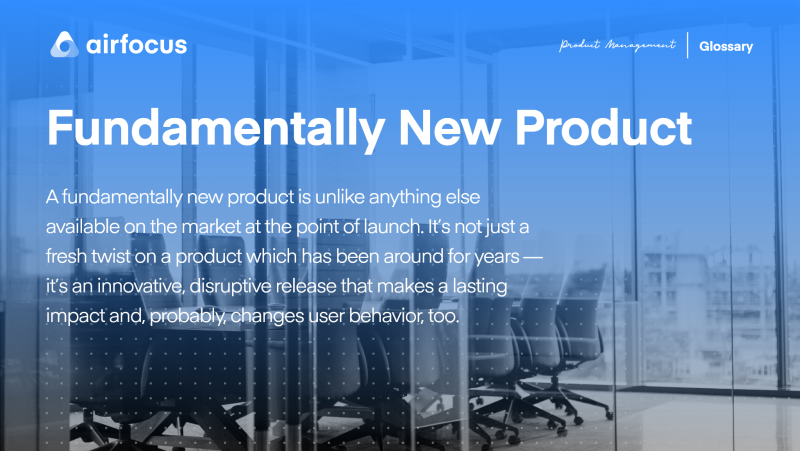Fundamentally New Product
What is a fundamentally new product?
Definition of a fundamentally new product
A fundamentally new product is unlike anything else available on the market at the point of launch. It’s not just a fresh twist on a product which has been around for years — it’s an innovative, disruptive release that makes a lasting impact and, probably, changes user behavior, too.
In order to create a fundamentally new product, teams must understand their target market, the latest innovations driving changes, and where gaps exist in the market. Identifying whitespace can reveal opportunities, though there’s a gulf between that and actually bringing a fundamentally new product to fruition.
Succeeding with a fundamentally new product involves in-depth research and ideation, drawing on input from internal staff and/or external specialists. Realizing fundamentally new concepts may demand the creation of new technologies and methods of utilizing them, as well as new business models with no existing comparison.
As a fundamentally new product is unique, it can be difficult to predict the level of success it will achieve. Will it be ignored by its target audience? Will it have an immediate impact, and then fizzle out? Or will it be an ingrained part of everyday life in the years to come?
Following an iterative workflow — with iterative testing and refinement — can help to guide the product along a steady path to completion. Gathering feedback (either from designers, developers, and/or target users) enables teams to create a product that solves a problem successfully, rather than simply relying on a gimmick.

General FAQ

Glossary categories
Experience the new way of doing product management

Experience the new way of doing product management







